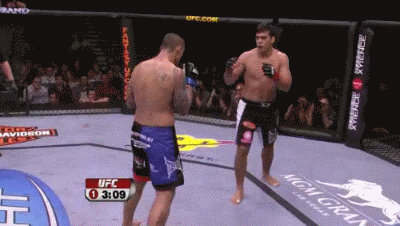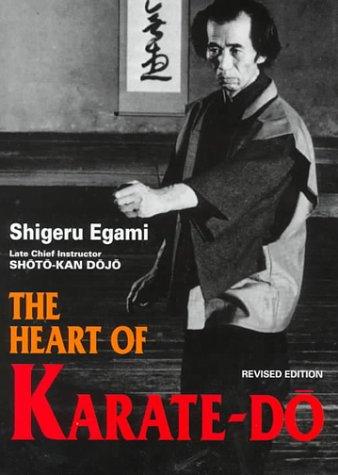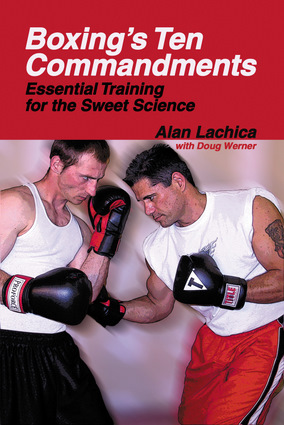Left handedness is far from a prerequisite for learning to fight southpaw though. In striking circles it is noticable that in the Far East; Thailand, Japan particularly, southpaws are much more common, as is left handedness in general. However many of the more successful southpaws in the world are simply southpaws because they chose to be; Anderson Silva, Lyoto Machida, Mirko Cro Cop, Takanori Gomi and the Diaz brothers are all right handed, while Marvin Hagler and Manny Pacquiao are apparently ambidextrous. In MMA the southpaw stance vs an orthodox fighter also means a greater distance between the combatants and makes it near impossible for either fight to shoot a double leg takedown, meaning they must resort to single leg takedowns, easier to see coming and easier to defend - which largely accounts for the massive success of Machida and Silva despite their lack of a wrestling pedigree (also demonstrated by Alistair Overeem later in this piece). Clearly being a southpaw brings tremendous advantages.
'Open Guard': A Completely Different Fight
The first thing to learn is some basic terminology which I picked up from the Shotokan Karate legend Masahiko Tanaka. He refers in his book 'Perfecting Kumite' (pick it up if you can find it) to the standard right handed fighter vs right handed fighter position as "closed guard" - which also applies to a left handed fighter vs another left handed fighter. It is when the stances of both men do not match, i.e. left hander vs right hander, that we get a position known as "open guard". The reason for this being that when a southpaw and an orthodox fighter meet, their front knees act as a barrier and it is very difficult to get close and infight unless one of the fighters squares his feet up. The range and the dynamic of an open guard position are utterly different to a closed guard position, rather than head movement and combinations, the match becomes about hand fighting and footwork. Just look at the distance maintained between Sultan Ibragimov and Wladamir Klitschko here which Wlad can do almost nothing with despite his enormous reach.
It is important early on to establish that the jab will not work as readily in an open guard position as it will in a closed guard one. It is still possible to land, but requires specific tactics and isn't as useful as a go to technique as when fighting a fighter in the same stance. If an opponent is handfighting, or in a guard position, it is almost impossible to hit him cleanly with the jab. The one exception is if he is carrying his lead hand low or apparently no reason, as Diego Sanchez did in his "victory" over Martin Kampmann last year, in which Kampmann jabbed his face into a bloody mess.
Handfighting: The Base
Many coaches, when their student is facing a southpaw, advocate stepping the lead foot outside of the opponent's lead foot and firing a straight right lead. This is sound advice but can be complicated considerably if the fighter is not experienced in hand fighting. If an orthodox fighter can keep his lead hand on the outside of a southpaw's (while in contact), or vice versa, he can effectively limit his movement. It is very difficult to throw a rear hand straight when the lead hand is being pushed across the body or downward.
Moreover, when fighting from an "open guard" position keeping your lead hand on the outside of a southpaw opponent's will:
- Remove his jab
- Provide the opportunity to slap it down and strike him
- Allow you to gauge more easily when he intends to strike.
Rear Leg Strikes
 K. V. Gradapolov - the Soviet boxing team head coach for much of it's life, and a man full of useful advice - noted in his book "Tactics of Foreign Masters" (a translated version of which I will be bringing to Ebook format soon) when speaking of Bob Fitzsimmons' fondness of switching to a southpaw stance that the resulting position (open guard) changed the dynamic of the fight from a back and forth of salvos to a battle based on footwork and powerful pot shots with the rear hand. In MMA and kickboxing this certainly holds true and can be extended to leg strikes too. The majority of southpaw strikers favor the rear leg kick to the inside of their opponent's lead leg. Not only do most opponent's not train against this kick as often as they do against kicks to the outside of the lead leg, but their inner leg is far more sensitive naturally and is likely to be less conditioned. Lyoto Machida's entire style, when he is not annoying his opponent with the inside leg kick, is to draw them in by backing up just as Noons did above and letting them walk onto a rear side power strike, accompanied with a step outside of their lead leg and often by circling off afterward. Against Silva (left) he already has control of his opponent's lead hand and has no need to fear a counter so pushes him back while stepping further to the outside of Silva's lead foot, tightening the angle through which his powerful rear hook travels. Against Ortiz (right) he is conscious of the takedown and instead circles out while attempting to snap Tito's head past him, before realising that Tito is already falling to the canvas.
K. V. Gradapolov - the Soviet boxing team head coach for much of it's life, and a man full of useful advice - noted in his book "Tactics of Foreign Masters" (a translated version of which I will be bringing to Ebook format soon) when speaking of Bob Fitzsimmons' fondness of switching to a southpaw stance that the resulting position (open guard) changed the dynamic of the fight from a back and forth of salvos to a battle based on footwork and powerful pot shots with the rear hand. In MMA and kickboxing this certainly holds true and can be extended to leg strikes too. The majority of southpaw strikers favor the rear leg kick to the inside of their opponent's lead leg. Not only do most opponent's not train against this kick as often as they do against kicks to the outside of the lead leg, but their inner leg is far more sensitive naturally and is likely to be less conditioned. Lyoto Machida's entire style, when he is not annoying his opponent with the inside leg kick, is to draw them in by backing up just as Noons did above and letting them walk onto a rear side power strike, accompanied with a step outside of their lead leg and often by circling off afterward. Against Silva (left) he already has control of his opponent's lead hand and has no need to fear a counter so pushes him back while stepping further to the outside of Silva's lead foot, tightening the angle through which his powerful rear hook travels. Against Ortiz (right) he is conscious of the takedown and instead circles out while attempting to snap Tito's head past him, before realising that Tito is already falling to the canvas.

Two others who have found enormous success with the rear knee strike by operating as southpaws (though of course the technique would work when performed by an orthodox fighter against a southpaw) are Giorgio Petrosyan, arguably the best kickboxer in the world today, and Alistair Overeem, the UFC's number one heavyweight contender. Notice how Petrosyan (left) has already stepped outside of his opponent's lead leg, shortening the distance necessary for his knee to travel. Though we cannot see his feet in this gif, just observe how far out his opponent's arm must swing (while almost fully extended) to get a hook in on him from his right. Clearly Giorgio is significantly off of his opponent's center line, indicating a step outside of his lead foot. Even if his opponent's strike had landed it would have so little momentum on it that Giorgio would likely have been unharmed, but being a perfect technician Giorgio's forearm is already there to stop it. Alistair Overeem (right) spent much of his recent fight with Brock Lesnar switching into the southpaw stance, just notice how Lesnar - known for his powerful, if primitive double leg - is forced to pick up a single leg rather than his traditional bull rush shot. After having weakened Lesnar with a couple of "uberknees" to the abdomen, Overeem remained in a southpaw stance and threw a brutal roundhouse kick to Lesnar's ribs.
 Notice how Overeem's step outside of Lesnar's lead foot tightens the angle off his kick, meaning it impacts earlier in its arc. Just as with Machida's hook against Thiago Silva it proves much harder to stop this kick as it sneaks in. It doesn't appear much but the step outside takes almost half a foot off of the arc of the kick before impact, which in striking range accounts for the difference between time for an opponent to react, and him getting placed on his rear.
Notice how Overeem's step outside of Lesnar's lead foot tightens the angle off his kick, meaning it impacts earlier in its arc. Just as with Machida's hook against Thiago Silva it proves much harder to stop this kick as it sneaks in. It doesn't appear much but the step outside takes almost half a foot off of the arc of the kick before impact, which in striking range accounts for the difference between time for an opponent to react, and him getting placed on his rear.Overeem has often switched into a southpaw stance to throw his left middle kick, rather than taking a quick switch-step as in Muay Thai, a tactic which he shares with Katsunori Kikuno and Pat Barry. He also utilized this technique on Gokhan Saki's broken arm and just before dropping Ben Edwards. Landing powerful kicks with the rear leg is noticeably easier from a southpaw stance against an orthodox opponent and vice versa, and is almost entirely responsible for the success of Yoksanklai Fairtex, Giorgio Petrosyan and Mirko Cro Cop.
Good handfighting, stepping outside of the opponent's lead foot and landing rear hand / leg strikes are only the beginnings of a good southpaw or anti-southpaw gameplan however. In coming installments we will examine Advanced Southpaw Tactics including angles and strikes that only exist from the open guard position.
To learn more about striking from a southpaw stance or against a southpaw stance I recommend purchasing either Anderson Silva's Striking Combinations DVD, Lyoto Machida's Box Set or the excellent boxing coach Kenny Weldon's entire series or just the volume that pertains to southpaws.
Please notice that www.Fightsgoneby.com now has a donate button in the top right, if you could see to donating even a dollar or two to the site it would make my commitment to continually bringing the deepest striking analysis on the net considerably easier. If donation isn't your thing then please do me the honor of recommending my site to your friends and followers!
Add me on Twitter @JackSlackMMA



















